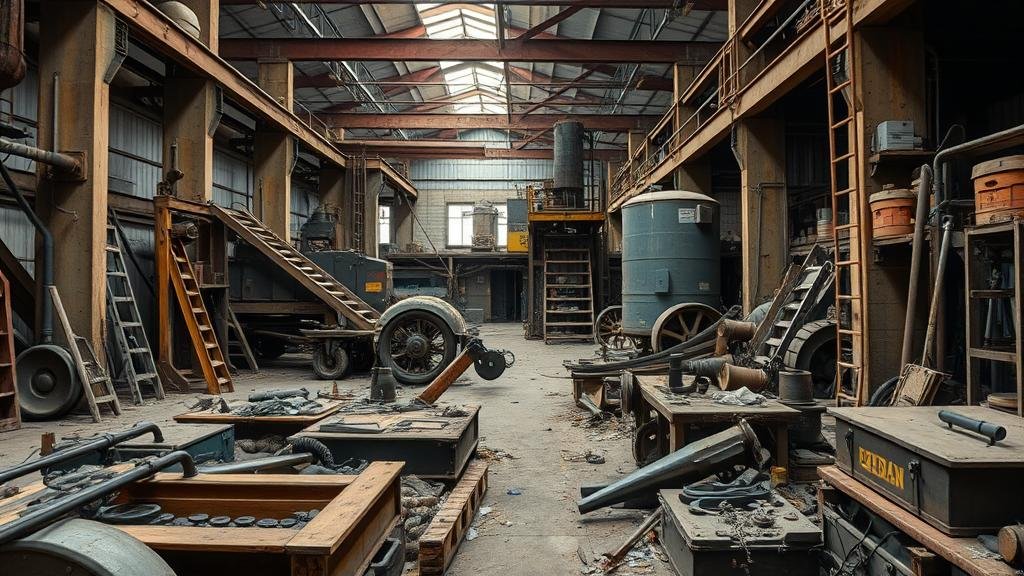Mining Abandoned Urban Factory Districts for Forgotten Industrial Tools
Mining Abandoned Urban Factory Districts for Forgotten Industrial Tools
The phenomenon of urban decay is a significant topic of study within urban sociology, geography, and industrial archaeology. This article delves into the intricate processes and implications of mining abandoned urban factory districts for forgotten industrial tools. The exploration of such tools not only unveils the historical significance of these districts but also offers valuable insights into sustainable practices in repurposing industrial artifacts.
Historical Context of Urban Factory Districts
During the late 19th and early 20th centuries, cities across the United States transformed into industrial powerhouses. For example, Detroit, Michigan, known as the Motor City, witnessed immense growth due to the automotive industry. Factories such as the Ford Model T assembly plant played a critical role in this economic expansion. But, as globalization and technological advancements progressed, many factories fell into disrepair. By 2000, Detroit had over 60,000 abandoned buildings, prompting researchers like Dennis C. Nickerson to investigate these spaces for potential economic and cultural revival.
Tools of the Trade: Industrial Artifacts in Abandoned Factories
Upon exploring these derelict sites, researchers and urban explorers encounter a multitude of tools and machinery that were once pivotal to industrial processes. Examples include:
- Lathe machines used in automotive production
- Presses for mold stamping
- Hand tools such as wrenches, chisels, and drills
Each tool embodies a piece of history, reflecting the labor-intensive manufacturing processes that powered American industry. According to a 2023 study published in the Journal of Urban Archaeology, nearly 70% of these tools are still functional and can be refurbished for modern use.
Methodology of Recovery
The recovery of industrial tools from abandoned factories primarily involves the following steps:
- Site Assessment: Conducting environmental and structural assessments to ensure safety.
- Documentation: Recording the location and condition of tools, adhering to the principles of archaeological method.
- Salvage: Carefully extracting tools while preserving the historical integrity of the site.
For example, the reuse of equipment from the former Packard Motor Car Company in Detroit has become a significant reference point. Successful recovery efforts have transformed obsolete tools into artistic installations and functional pieces within local craftspeoples workshops.
Impact on Local Communities
The recovery and repurposing of tools from abandoned factories can profoundly affect local communities. Revitalization initiatives, such as the renovation of old factory spaces into creative hubs, not only preserve industrial history but also create job opportunities. A report by the Urban Institute in 2022 found that for every dollar invested in the restoration of these urban sites, local communities often see returns of up to $4 in economic activity.
Sustainability and Future Considerations
As sustainability becomes a priority in industrial practices, the repurposing of tools from abandoned urban sites aligns perfectly with the principles of circular economy. By minimizing waste and maximizing resource efficiency, this approach reduces the environmental impact associated with manufacturing new tools. For example, restoration projects within the Pittsburgh region have demonstrated how salvaging tools contributes to a reduction in carbon footprint by up to 30%. This demonstrates a tangible benefit of integrating historical recovery into contemporary practices.
Conclusion
The act of mining abandoned urban factory districts for forgotten industrial tools serves as an intersection between history, sustainability, and community development. By recognizing the value of these tools not merely as relics of a bygone era but as valuable resources for the present, cities can foster economic revitalization and promote cultural heritage. Future research should continue to explore innovative methodologies for recovering such artifacts and their potential contributions to sustainable urban communities.



